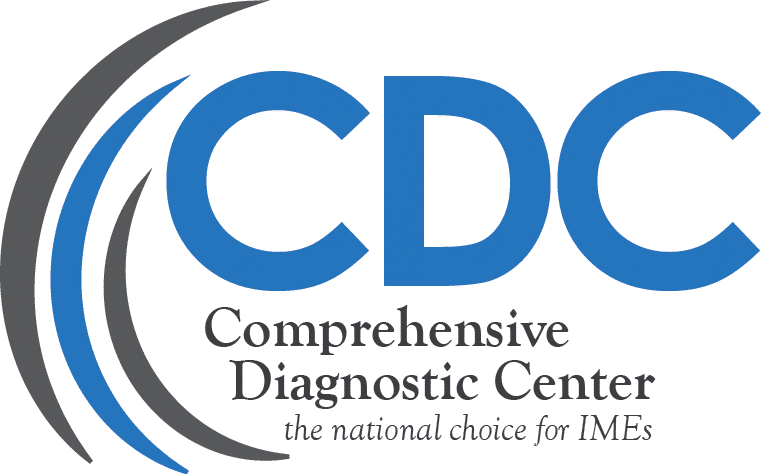The Evolving Role of Telemedicine in IMEs: How Remote Evaluations Are Changing the Landscape of Independent Medical Examinations
May 1, 2025Psychological Evaluations in Workers’ Compensation Claims
September 1, 2025The Power of Review: Why Medical Record, Diagnostic Film, and Peer Reviews Matter in Workers’ Compensation Claims
When a workers’ compensation claim is filed, a lot is riding on the outcome for the injured worker, the employer, and the insurer. Accuracy, objectivity, and medical clarity is critical.
At the core of these evaluations lie three essential tools that help ensure claims are resolved fairly and efficiently:
- Medical Record Reviews
- Diagnostic Film Reviews
- Peer Reviews
These review processes may not be the most talked-about part of an Independent Medical Evaluation (IME), but they often hold the answers needed to advance a claim.
Here’s why they matter:
1. Medical Record Reviews:
The Foundation of the Case
Every claim starts with a story, one told through medical records. These include doctor notes, test results, treatments, and timelines.
A Medical Record Review looks at this documentation to answer key questions:
- Is the injury truly related to work?
- Has care followed medical guidelines?
- Is the treatment timeline appropriate?
Unlike a doctor’s visit that focuses on care, this review looks at the full picture objectively. As noted by the National Center for Biotechnology Information (NCBI), clear and consistent medical documentation is vital when assessing care and guiding outcomes in legal and insurance settings (NCBI, 2009).
These reviews can uncover missing details, inconsistencies, or red flags. They help set the stage for a more informed and accurate IME.
2. Diagnostic Film Reviews:
A Clearer Look at the Injury
While records tell the story, Diagnostic Film Reviews help visualize it. Imaging modalities such as X-rays, MRIs, and CT scans provide a direct examination of the structures affected by injury. These evaluations are crucial in an IME as they verify whether the reported injury corresponds with the observed findings.
For example, a patient may claim severe joint damage, but a normal MRI might challenge that narrative. Or, conversely, a subtle fracture on an overlooked X-ray could explain persistent pain.
According to the Mayo Clinic, diagnostic imaging is vital for confirming diagnoses and avoiding unnecessary treatments, particularly when symptoms and imaging results differ [Mayo Clinic, 2024].
Diagnostic film reviews verify injuries and ensure effective and appropriate care.
3. Peer Reviews:
A Fresh Perspective from Another Doctor
A Peer Review involves a licensed doctor with the same specialty reviewing the care provided by the treating physician.
This reviewer doesn’t have a stake in the claim. That’s important. Their job is to evaluate whether the care provided follows accepted medical guidelines. Is it too much? Too little? Necessary at all?
According to the National Institutes of Health (NIH), peer review is a key tool in medicine. It promotes evidence-based care and supports consistency in how decisions are made (NIH, 2017).
Peer Reviews also help settle disagreements, prevent unnecessary procedures, and ensure that the injured worker is getting treatment that really makes sense.

Why These Three Reviews Work Best Together
Each review serves a different purpose, but they work best when combined.
- Medical Record Reviews offer the full history.
- Diagnostic Film Reviews confirm the injury through images.
- Peer Reviews evaluate whether the treatment plan is right.
Together, they provide a comprehensive perspective on the case. They assist in advancing claims, minimizing confusion, and ensuring that all parties from the employer to the employee can rely on the outcome.
Conclusion
At Comprehensive Diagnostic Center (CDC), we provide essential Medical Record Reviews, Diagnostic Film Reviews, and Peer Reviews for Workers’ Compensation claims and IMEs. Our experienced team ensures precise and clear evaluations for confident decision-making.
References
- NCBI. “Medical Records and Issues in Negligence.” https://www.ncbi.nlm.nih.gov/pmc/articles/PMC2779965
- Mayo Clinic. “Tests Procedures” https://www.mayoclinic.org/tests-procedures/x-ray/about/pac-20395303
- NIH. “Attitudes Towards Evidence-Based Medicine.” https://www.ncbi.nlm.nih.gov/pmc/articles/PMC5440905/

